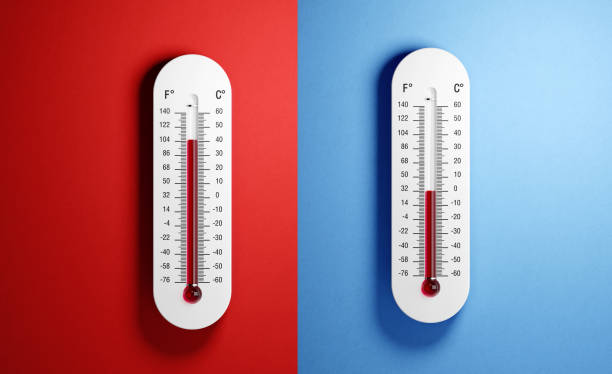Understanding temperature conversions between Celsius and Fahrenheit is vital in daily life, whether you’re tracking the weather, cooking, or performing scientific calculations. One common question many people ask is: what is 33 degrees Celsius in Fahrenheit?
In this article, we will walk you through the process of converting 33°C to Fahrenheit and discuss its significance in different aspects of life. Whether you’re adjusting a recipe, checking the weather, or understanding climate-related health risks, knowing this conversion will be useful.
What is 33 Degrees Celsius in Fahrenheit?

To convert 33°C to Fahrenheit, you can use the following standard formula:
F = (C × 9/5) + 32
Where:
- C is the temperature in Celsius
- F is the temperature in Fahrenheit
Step-by-Step Conversion of 33°C to Fahrenheit:
- Multiply 33 (Celsius) by 9/5:
- 33 × 9/5 = 59.4
- 33 × 9/5 = 59.4
- Add 32 to the result:
- 59.4 + 32 = 91.4°F
- 59.4 + 32 = 91.4°F
Thus, 33°C equals 91.4°F.
Understanding the Importance of 33°C in Different Contexts
1. Weather Forecasting and Everyday Life
33°C (or 91.4°F) is a significant temperature to understand, especially when it comes to daily life, travel, and outdoor activities. At this temperature, people generally experience hot weather, and the need for cooling solutions like air conditioning or fans increases.
- Summer days: In many countries, 33°C is a typical temperature during hot summer days, especially in tropical and subtropical regions. For individuals planning outdoor activities such as hiking, running, or walking, it’s important to stay hydrated and protect yourself from sun exposure. 33°C is hot enough that heatstroke and dehydration can occur if you’re not careful.
- Travel tips: If you’re traveling to a region where 33°C is common, make sure to pack light, breathable clothing, and always carry water. This will ensure you stay comfortable and prevent heat-related illnesses.
2. Cooking and Food Preparation
Temperature is a crucial factor when cooking. 33°C is an important temperature when preparing certain foods, especially when working with yeast-based dough or baking processes. Yeast rises best at moderate temperatures between 80°F to 90°F (around 27°C to 32°C), and 33°C is slightly above that range but still effective for proofing and raising dough.
Example: Bread making
In bread making, when the dough is placed in a warm environment at 33°C, the yeast can work quickly to help the dough rise and become light and fluffy. However, if the temperature goes much higher, it can overactivate the yeast and cause the dough to rise too fast, affecting the final texture.
3. Scientific and Laboratory Applications
In scientific research, especially in fields like biology, microbiology, and biochemistry, temperatures are often maintained in specific ranges to conduct experiments effectively. 33°C is often used in enzyme activity studies, bacterial cultures, and biochemical reactions.
- Many microorganisms and enzymes work most efficiently at 33°C, which makes it an optimal temperature for growth and metabolic activities in controlled environments like incubators or laboratories.
- This temperature is also used in laboratory simulations and for testing materials and substances that need a certain temperature to react properly.
4. Health and Public Safety
Public health campaigns often provide guidelines for temperature awareness. 33°C (91.4°F) is considered a warm temperature, but it’s important to understand the potential health risks that come with prolonged exposure.
- Heat-related illness: Prolonged exposure to 33°C can lead to heat exhaustion or heatstroke, especially for vulnerable individuals like the elderly, children, or those with pre-existing health conditions. Wearing lightweight, light-colored clothing and staying in cool environments are critical measures for avoiding heat-related illnesses.
- Dehydration: Temperatures of 33°C can lead to rapid dehydration. People should be mindful of the importance of drinking plenty of fluids and avoiding excessive physical exertion during the peak heat of the day.
5. Industrial and Mechanical Use
In industrial settings, temperature control is crucial. 33°C might be a standard operating temperature for machinery and equipment that needs to function efficiently within a controlled range. For instance, manufacturing and chemical processes may require a consistent temperature of 33°C for optimal operations.
Many systems, particularly those involving temperature-sensitive goods (like electronics and pharmaceuticals), must operate at exact temperatures to maintain quality and prevent degradation. In such industries, the accurate conversion of Celsius to Fahrenheit becomes critical for ensuring safe operation and preventing damage to equipment or products.
How to Convert Celsius to Fahrenheit

It’s easy to convert Celsius to Fahrenheit using a simple mathematical formula.
The general formula to convert from Celsius to Fahrenheit is:
F = (C × 9/5) + 32
This formula works for any temperature in Celsius, and it’s easy to remember:
- Multiply the Celsius temperature by 9/5.
- Add 32 to the result.
Let’s look at a couple of examples:
- 20°C to Fahrenheit:
F = (20 × 9/5) + 32 = 68°F - 40°C to Fahrenheit:
F = (40 × 9/5) + 32 = 104°F - 50°C to Fahrenheit:
F = (50 × 9/5) + 32 = 122°F
As you can see, the conversion is simple and can be done quickly for any temperature.
Real-World Applications of 33°C (91.4°F)
1. Home Comfort
Temperatures like 33°C (91.4°F) call for cooling solutions such as air conditioning or fans to maintain comfort at home. If your house reaches these temperatures, it’s essential to cool down the environment to avoid discomfort and potential heat-related health risks.
- Increased energy consumption: During hot weather, especially when temperatures hit 33°C, electricity bills can increase as air conditioning and fans run continuously. This is why energy-efficient cooling systems or using natural cooling methods like open windows or shade can be effective in reducing costs.
2. Public Health Awareness
In regions that experience 33°C regularly, government and health organizations issue heat advisories to protect the public. These advisories typically recommend staying indoors, limiting outdoor activities, and drinking plenty of fluids.
FAQs About 33 Degrees Celsius to Fahrenheit
1. What is 33°C in Fahrenheit?
33°C = 91.4°F.
2. Is 33°C considered hot?
Yes, 33°C is a warm temperature, typically experienced during hot summer days.
3. How do I convert Celsius to Fahrenheit?
Use the formula F = (C × 9/5) + 32.
4. What is the best temperature for baking bread?
33°C is suitable for proofing dough, as yeast thrives at this temperature.
5. What should I do if it’s 33°C outside?
Stay hydrated, wear light clothing, and avoid excessive physical activity to stay comfortable and safe.
6. Why is 33°C important in scientific experiments?
Many biological and chemical processes work efficiently at 33°C, making it an important temperature in laboratory settings.
7. How does 33°C impact public health?
It’s essential to take precautions against heat exhaustion and dehydration when temperatures reach 33°C.
8. What’s the equivalent of 33°C in Fahrenheit for weather?
In Fahrenheit, 33°C equals 91.4°F, which is quite warm, indicating the need for cooling solutions.
Conclusion: Why Knowing 33°C to Fahrenheit Matters
33°C = 91.4°F is a significant temperature that plays a role in various aspects of daily life, from weather forecasting to cooking, health, and science. Understanding this temperature conversion ensures that you can make informed decisions about how to handle hot weather, safely cook your favorite foods, or conduct precise scientific research. Whether you’re planning your next outdoor activity or following a recipe, knowing how to convert between Celsius and Fahrenheit can make all the difference.
Related Post
- Antonio Chi Su – Exploring the Identity Behind the Name!
- Lepbound – Exploring the Meaning, Uses, and Impact of This Emerging Term!
- Residencerenew Com – Your Trusted Platform for Modern Home Renewal and Smart Living!
- 800 Wtlqv Vesdtm Street Rsjhwmt Kc 06137 – Decoding the Mysterious Address!
- 3381012544 – What You Need to Know About This Mysterious Phone Number!










